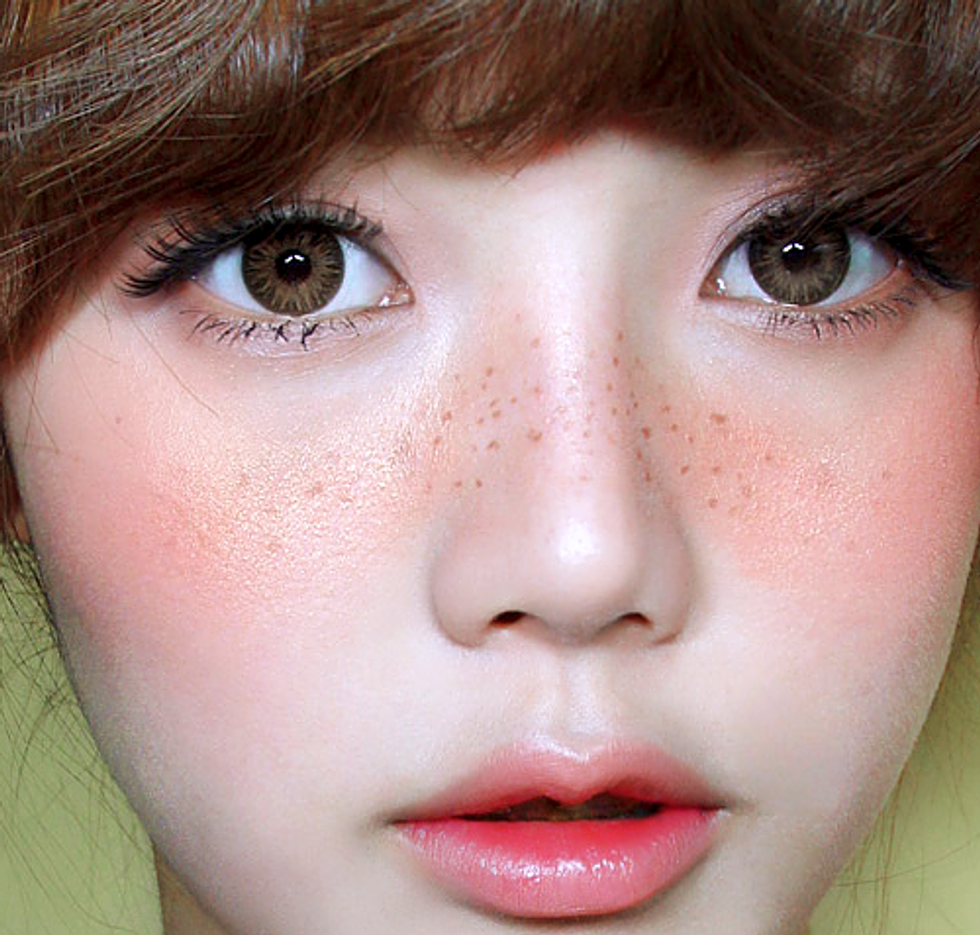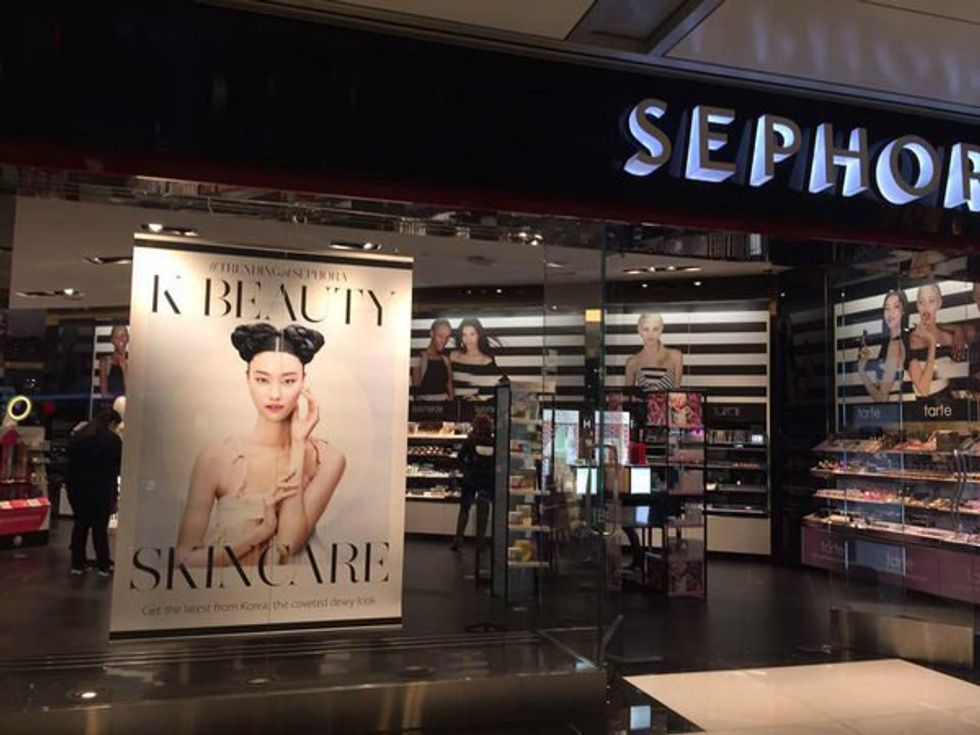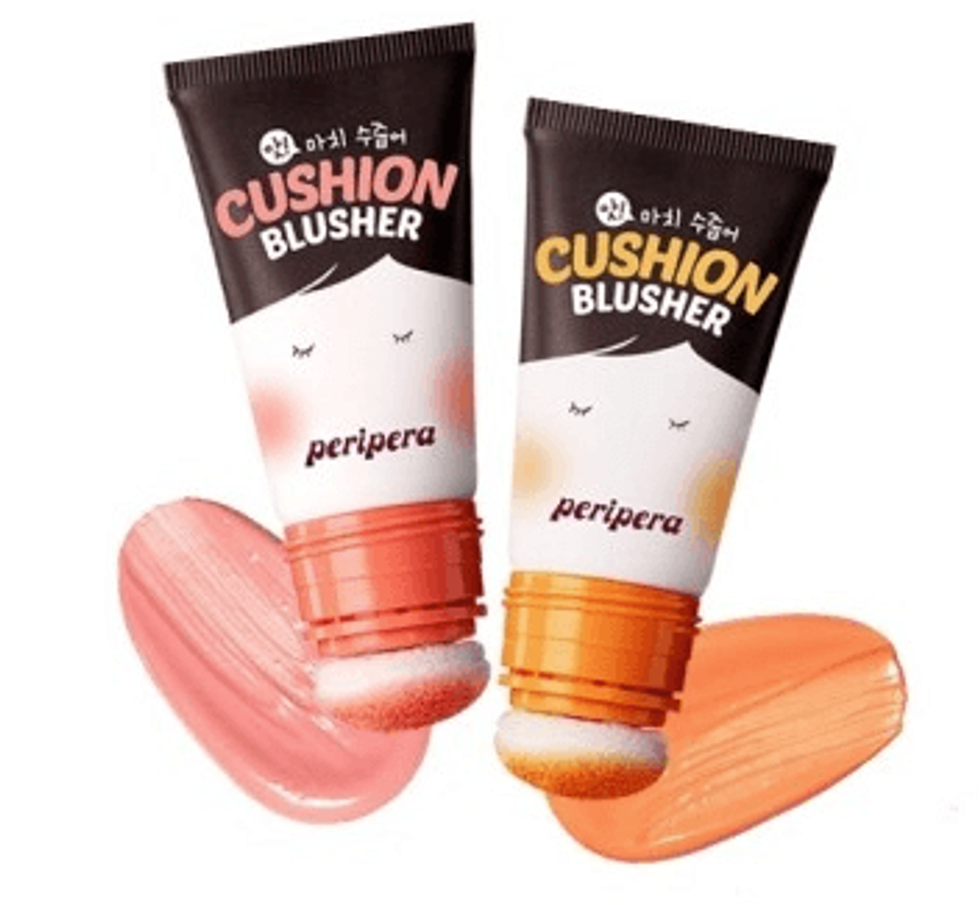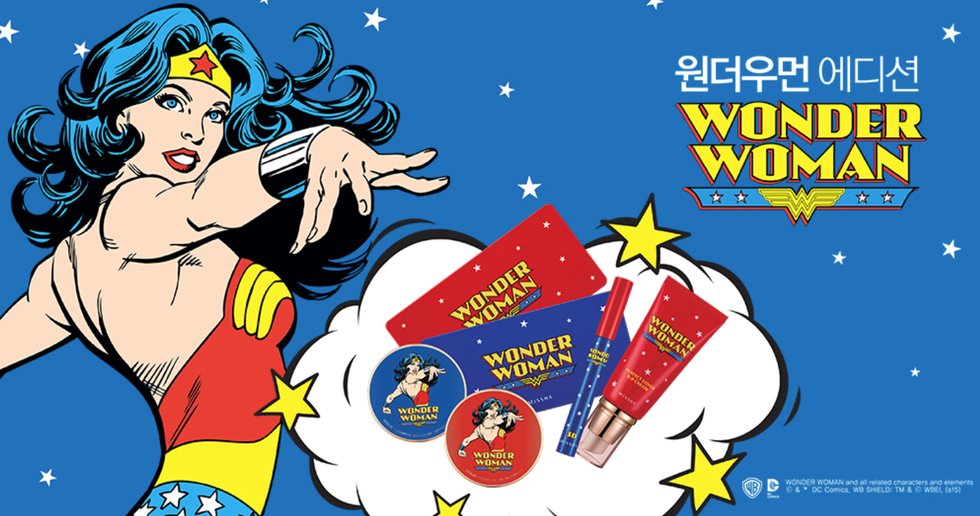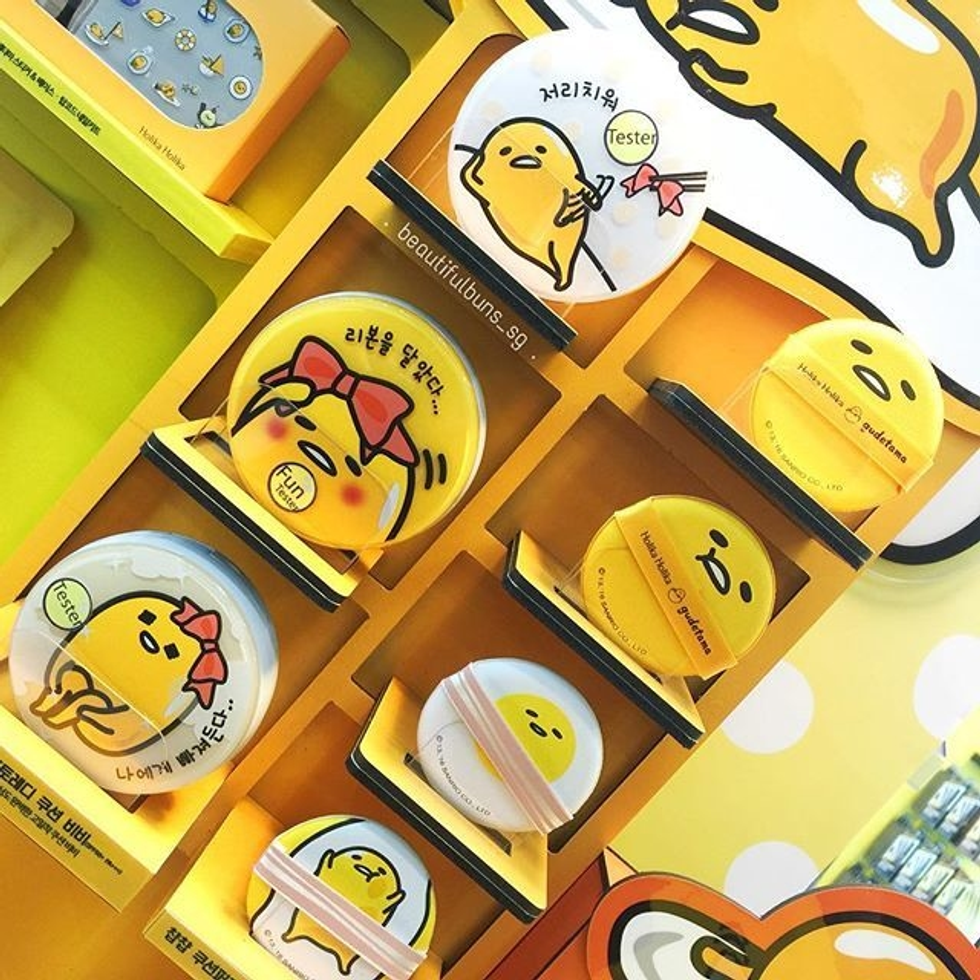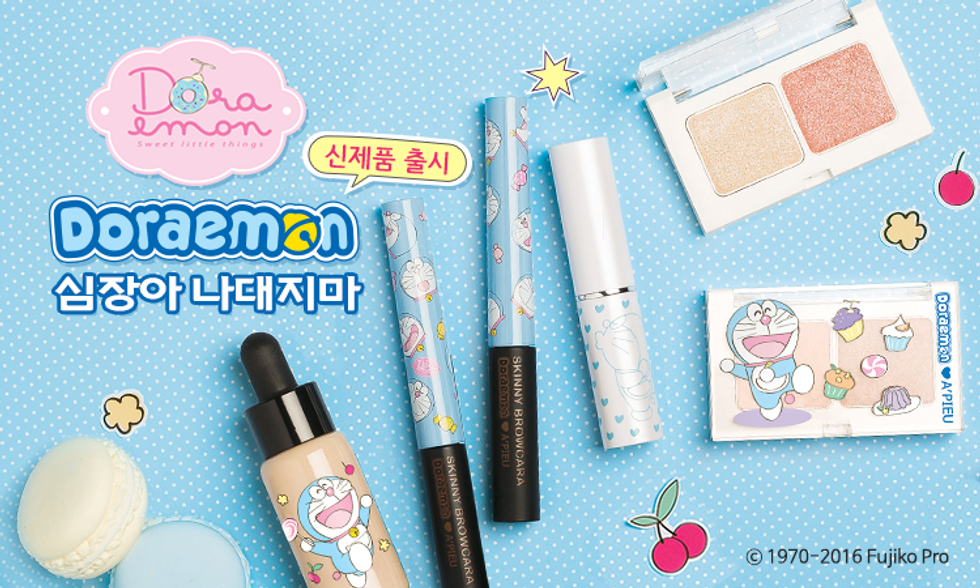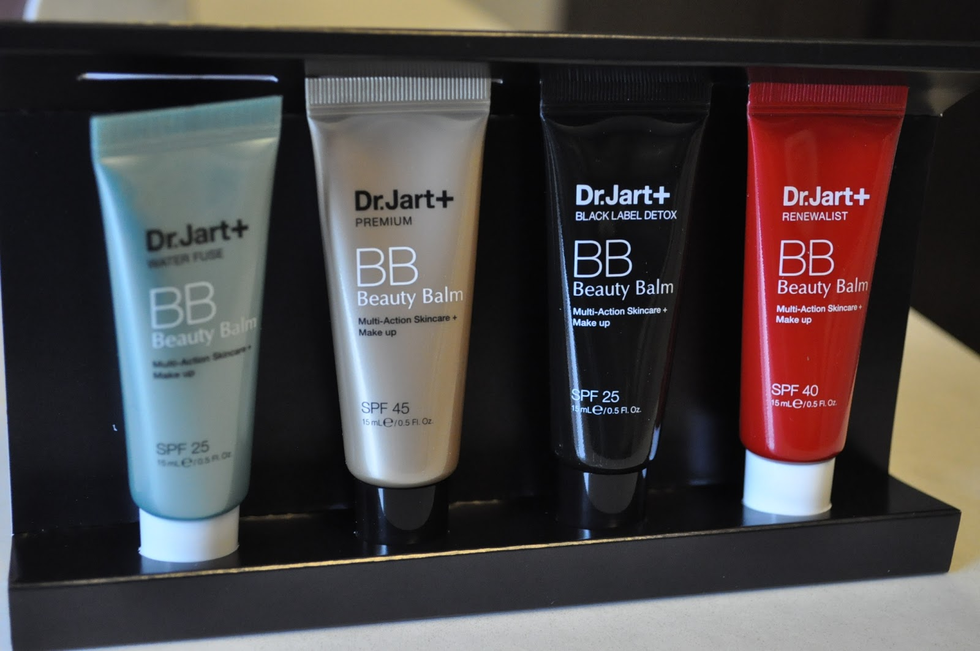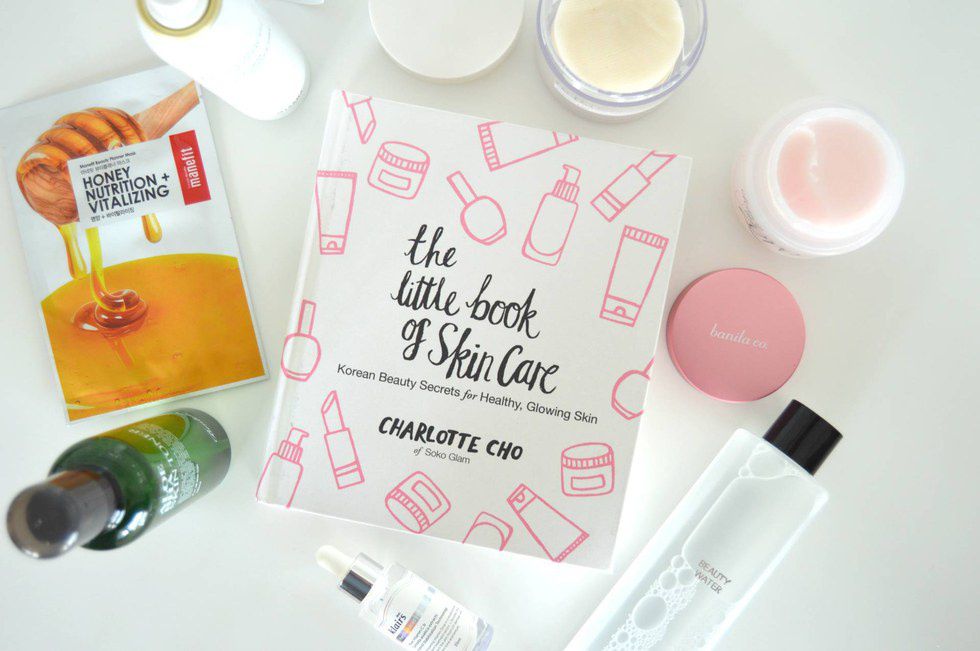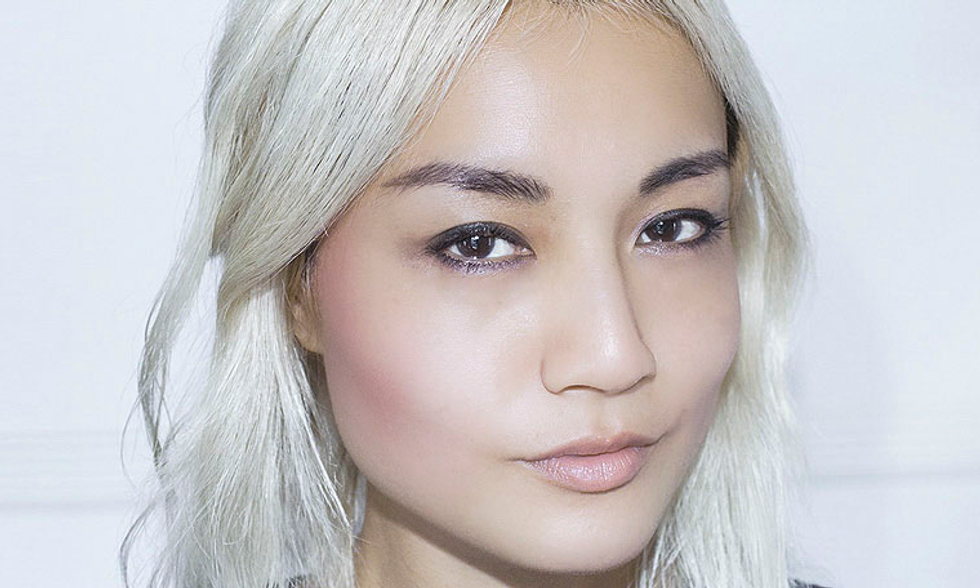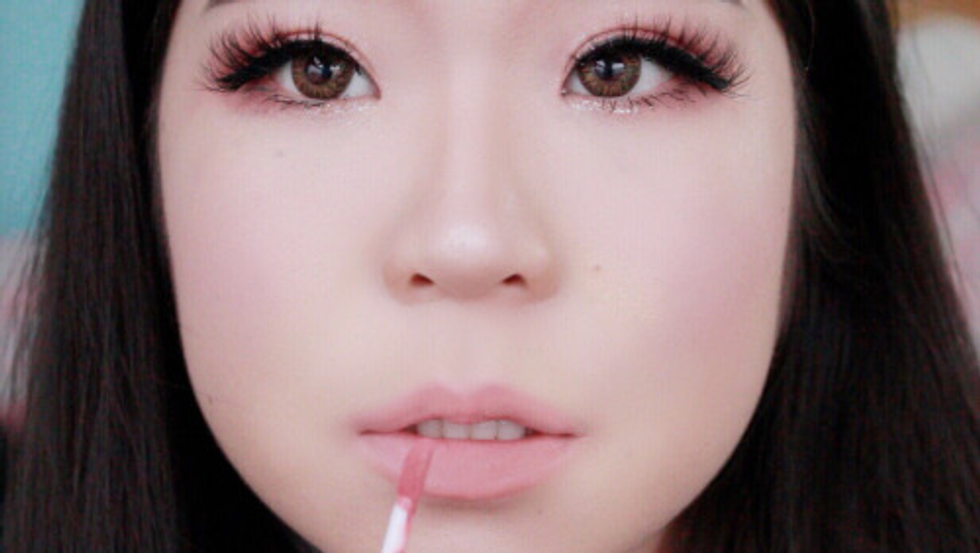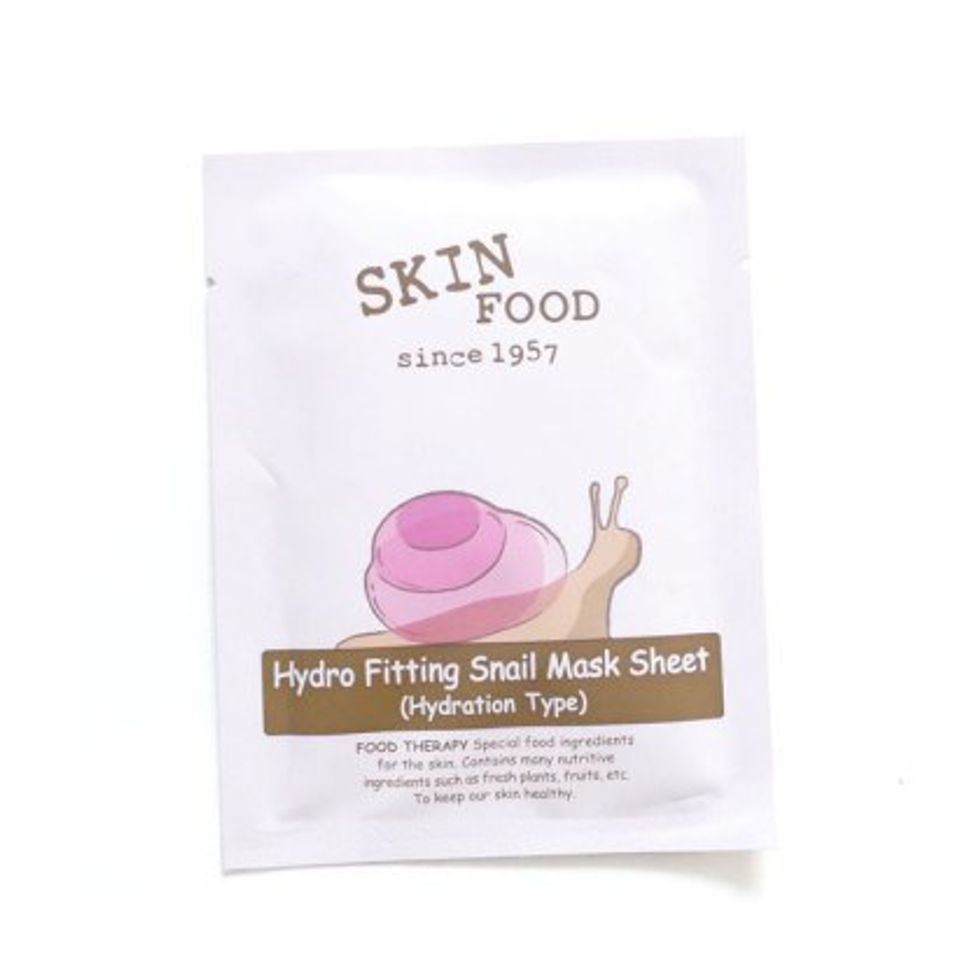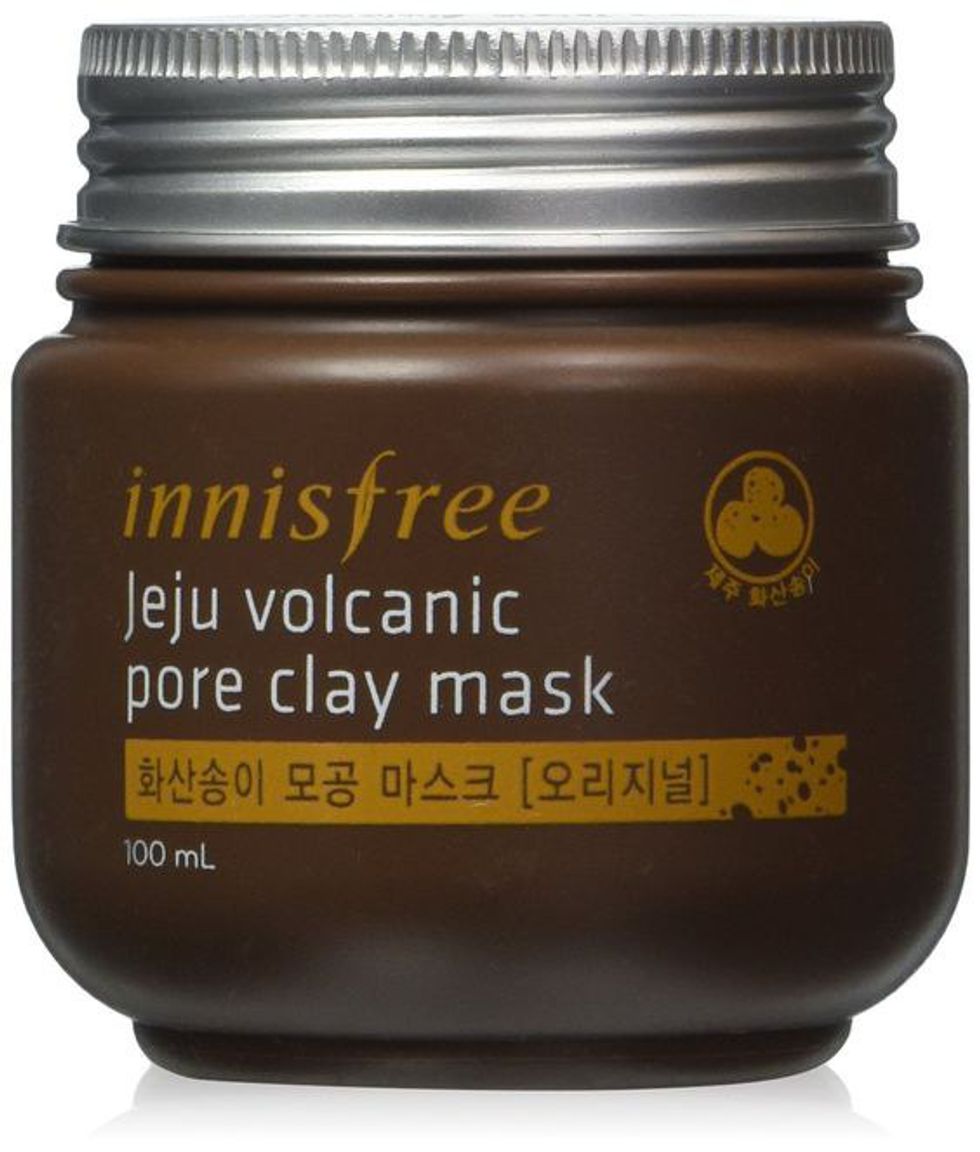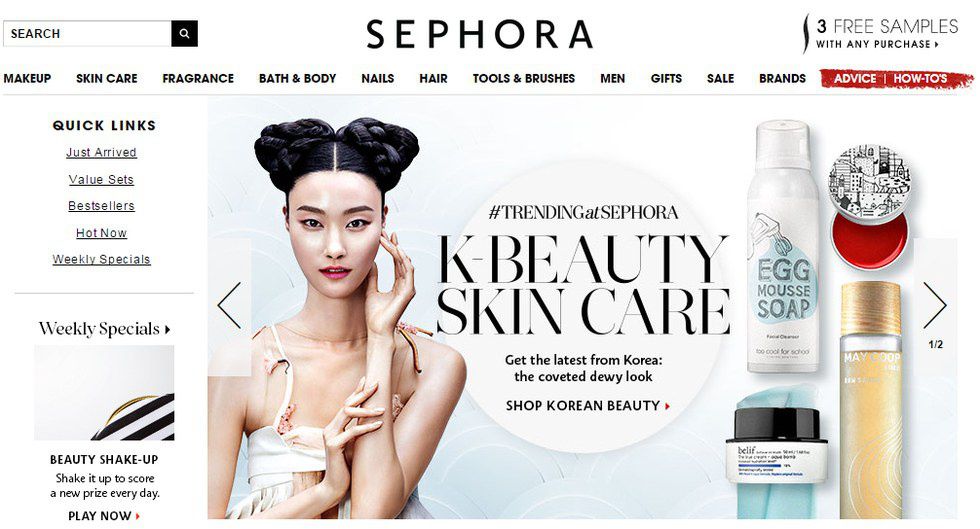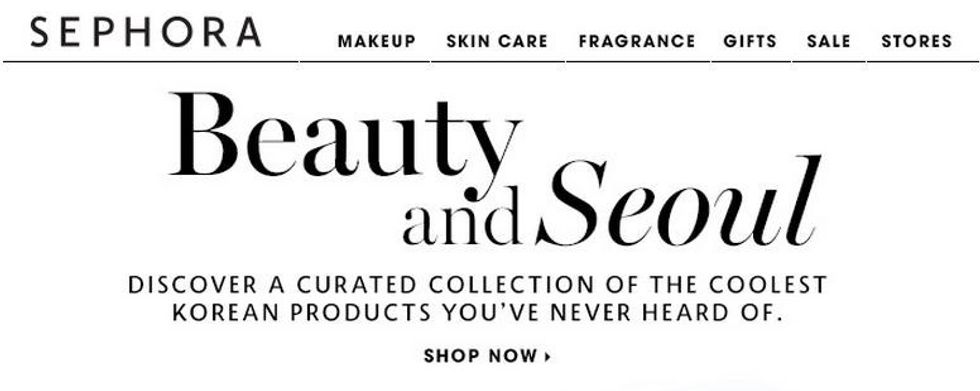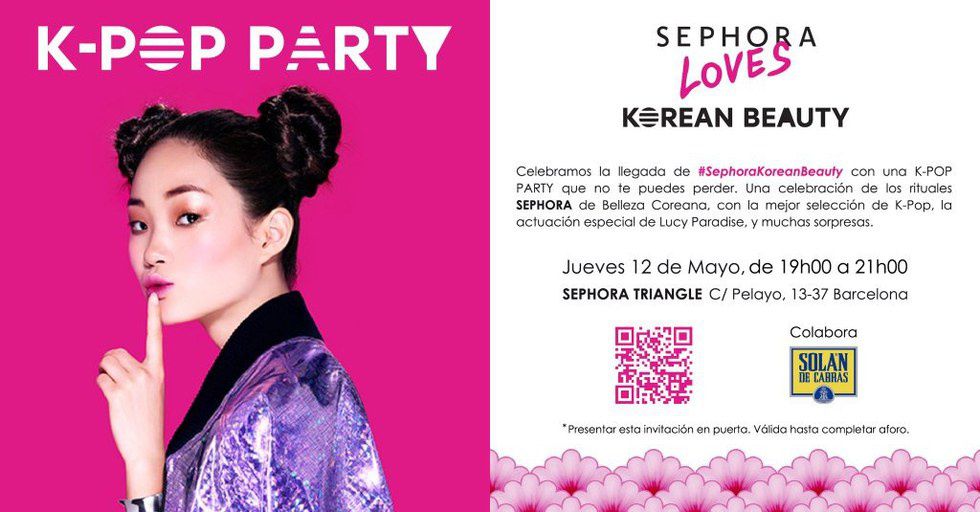With the internet seeing an increasing popularity in YouTube makeup tutorials and Instagram beauty aficionados boasting 500K+ followers, it’s easy to fall into the sea of bold matte lips, dramatically arched and faded brows, and piercing smokey eyes that make up some of the hallmarks of current American beauty trends. In the past few years, the “fake” but flawless look hs taken this side of the world by storm, with products such as brow dips and pomades by Anastasia Beverly Hills becoming best-sellers in the wake of 2016’s “Instagram brow” trend.
However, anyone who’s ever browsed in Sephora or watched videos like this one by popular YouTubers knows of another makeup look only somewhat recently emerging in the United States, and an entirely different beauty standard and regime coming along with it.
Explore this trend and you’ll find countless Korean beauty product users sporting looks that favor soft unarched brows deliberately sculpted to look straight coupled with dewy, natural-looking skin and flushed cheeks and lips. Eye makeup is applied with the goal of creating a youthful and doe-eyed appearance, something that can also be achieved by wearing circle lenses---another Korean fashion trend that is beginning to see popularity outside of eastern Asia. Even the “bitten lip” look, a makeup trend that involves applying a gradient tint to your lips with the darker color in the middle, brought forth an onslaught of attention to Korean beauty techniques after it soared in popularity in the United States. American beauty brands such as Revlon hopped on by releasing the Just Bitten Kissable Balm Stain, even though Korean cosmetics companies such as Laneige were already far ahead with products like the Laneige Two-Tone Lip Bar and TONYMOLY’s Liptone Get It Tint.
In fact, if you have an interest in makeup and beauty products at all, then chances are you have probably seen or inadvertently followed trends started by Korean celebrities, makeup artists, beauty bloggers, and particularly Korean “ulzzangs” (a Korean word that literally translates to “best face” and refers to attractive and stylish Korean youth who become popular as social media models) and never even knew about it. Where Korean beauty and skincare was once considered a niche interest, brands such as Innisfree, Etude House, and Missha are now all commonplace in stores such as Sephora and Ulta Beauty, and are also starting to crop up in smaller beauty shops and galleries in Europe and the United States. This is probably unsurprising if you’ve been paying attention, but if not, then the evidence is right in the numbers: the Korean beauty industry is currently valued at about 10 billion dollars, with the most lucrative profits resulting from exports. That’s right---South Korea, a nation that has historically relied on manufacturing and exportation due to the small size of the country and the lack of natural resources, has been able to increase profit by exporting beauty products to foreign markets. With France in the lead, Korea only comes in at second place as one of the leaders of the global beauty industry.
So why does Sephora have an entire section devoted only to Korean beauty products, and why is Buzzfeed posting a new “18 Korean Beauty Products You Need In Your Life” article every other week?
For one, Korean beauty shakes up everything we know about what good beauty products look like and how they’re supposed to function. For those who are accustomed to sleek black compacts and minimalist packaging, the brightly colored, cartoonish, and artistic designs of many Korean beauty products is a step in a completely different direction. Playing up the “cuteness” of packaging designs is nothing new for most Korean products, and is not limited to just beauty items. In addition, cutesy and whimsical designs are becoming increasingly more popular as Korean cosmetics and skin care product manufacturers begin to realize that these unique packaging designs appeal greatly to foreign markets.
The “kidult” (키덜트) trend in Korea refers to the increasing popularity of teenagers and young adults pursuing hobbies and interests that are commonly associated with children, such as comic books, cartoons, and games targeting a younger demographic. There are even conventions such as the Kidult & Hobby Expo 2016 in Seoul targeting “kidults”. With the rise of this trend is an increasing popularity in Korean makeup and beauty products featuring comic and cartoon characters such as Wonder Woman, Gudetama, and Doraemon. These cosmetics, though childlike in appearance, are entirely marketed to adults and are released by hugely popular Korean brands known for high-quality products such as Missha and Skinfood.
“In the past, France was considered the global leader in beauty, but now all eyes are on Korea,” says Peter Thomas Roth, a skin-care expert who spoke to New York Magazine. A huge part of Korea’s beauty industry is focused on skin care, which may explain many of the stark differences between American and Korean beauty trends. One of the first Korean beauty products to gain popularity overseas was BB cream (which stands for “blemish balm” or ‘beauty balm”), largely because it was the first time the line between a skin care product and a color correcting cosmetic was effectively erased. BB cream is much like a tinted moisturizer, acting as a very light concealer and foundation while also protecting the skin from the sun, reducing blemishes, and keeping the skin hydrated. In 2011, the dermatologist-owned Korean brand Dr. Jart+ introduced BB cream to Sephora, setting off a BB cream and CC cream craze---the effects of which are still lasting today.
“Most of Korean beauty is for the skin products, not the makeup products,” says Korean makeup artist Seong-hee Park to Fusion Magazine. “Korean makeup needs dewy skin, so you definitely need to hydrate your skin.”
Park touches on a good point regarding American and Korean views on makeup and skincare. To the Korean beauty aficionado, skincare and cosmetics absolutely go hand-in-hand. In a country where having a 10-step skin care regimen is not out of the norm for women and beauty products marketed to men make up 10% of the market, it is not surprising at all that the Korean population may be more likely to spend money cultivating glowing, naturally healthy skin rather than purchasing full-coverage face makeup. In fact, the quintessential Korean make-up look requires far less face makeup than what is trendy in the United States right now---contouring in Korea is usually limited to draping, which is the technique of using blush to contour, resulting in a softer definition that complements the features regardless of the individual’s face shape. It also helps create a more flushed look as opposed to the bronzed appearance favored by the Kardashians and by Instagram beauty bloggers that use conventional contouring techniques
Boasting such beauty innovations as the first ever cushion compact (which set off a global cushion makeup trend, inspiring even Lancome to come out with their own “miracle cushion”) and the creative use of natural ingredients ranging from milk to charcoal to even snail slime, the Korean beauty industry has certainly earned the international spotlight. However, no one can deny the role that exotification has had in the popularization of Korean beauty.
Though this increase in the K-beauty industry’s global popularity benefits Korea directly, especially Korean consumers of beauty products who now find a more varied and larger selection of items to choose from, the way the American and European media has depicted this industry has resulted in criticism from some Korean bloggers. A quick search for topics related to Korean beauty results in article upon article describing unheard-of Korean beauty products as “weird” and “strange”, calling their ingredients “exotic”, and praising Korean women for having "smooth, flawless, porcelain skin”—all of which are techniques to get people to click and read, but also perpetuates harmful stereotypes about Asian people that some consider to be Orientalism. After all, painting K-beauty products as strange and mystical simply because they’re Asian, calling the ingredients of Korean beauty products “exotic” when many of these ingredients have been used avidly in skin care in the West, and generalizing Korean women as all having flawless, clear, and pale skin certainly seems to fit the definition of Orientalism perfectly.
“It's not surprising that's the tack taken when marketing K-Beauty; certainly the west has a long (and sordid) history of referencing Asia in an exoticizing way meant to attract and entertain a European audience,” says one beauty blogger about this disturbing trend.
In addition, even the moniker “K-Beauty” and its use as a category reveals problematic attitudes about the way Korean beauty products are viewed by western demographics. Despite the fact that Korean beauty spans a hugely diverse array of products and brands, American stores like Sephora, Ulta Beauty, and Urban Outfitters still stock all Korean beauty products in its own advertised section, usually titled “K-Beauty” or some variation, without regard for the differences in types of K-beauty products. Advertisements tend to play up the foreign origins of these beauty products rather than explaining their benefits or how to use them. Meanwhile, many reviews, unboxing videos, and even articles by professional journalists constantly include non-Korean Asian products, such as SK-II, on lists specifying K-beauty products---revealing that the history of homogenizing Asian cultures can be exemplified through even something as mundane as beauty vlogging.
“‘K-Beauty’ advertisements encourage consumers to achieve the mysterious ideal beauty of a Photoshopped, milky-skinned woman from the far-off country of Korea,” says Korean blogger Hannah Kim. “All the while, these ads do not increase consumer knowledge about Korean culture. Of course I am well aware that advertising does not exist to educate society. I am only making the point that when foreign products are commodified based solely on ethnicity, Western retailers are able to reduce a culture to a fetish for profit, and Western consumers are encouraged to cash in to get a little taste of the exoticism.”
This is not the first time the rising global popularity of certain aspects of Korean culture was met with fetishization and exotification---ever since the beginning of Hallyu (the spread of Korean music, dramas, variety shows, and idols across the globe beginning in the 1990s, also known as the Korean Wave), western interest in Korean pop culture, fashion, and style has muddied the line between respectful appreciation and modern-day Orientalism. Hallyu has had a significant influence on the western K-beauty craze, with many K-beauty fans purchasing products only after being inspired by characters in K-dramas and by their favorite K-pop idols. Companies like Sephora have taken advantage of the huge global popularity of K-pop and the brand recognition that K-pop superstars have by using it as an advertising angle.
But is it cultural appropriation? Is it racist to enjoy the benefits of Korean cosmetics and skincare products that are not often found in western makeup brands, such as lightweight coverage, natural ingredients that don't irritate the skin, and innovative packaging and dispensing techniques? The fact that Korean beauty is a largely export-based industry designed to make a profit off of foreign markets appears to disprove that. The expansion of the Korean beauty industry to the global market has largely benefited the Korean economy, to the point where the Korean government has openly supported Korean beauty companies going global (President Park Geun-hye reportedly sent a congratulatory rice cake to the owner of Memebox, a popular K-beauty box subscription service). In addition, makeup and skincare are universal things that have no specific ties to culture.
However, it is still important to acknowledge how many aspects of Korean beauty trends reflect cultural attitudes and standards of beauty that are unique to Korea. For one, the glorification of pale, "milky" skin (evidenced by the fact that nearly every face makeup in Korea has whitening effects and it is very common to use BB cream much lighter than your skin) reflects the long and troubling history of colorism in Asia. The idea that darker is skin is less attractive and less desirable is a belief rooted in classism that can be traced back to precolonial Korea, where the upper-class tended to be pale from staying indoors while working-class laborers and farmers would brown in the sun. In addition, many Korean eye makeup trends rise from a desire to emphasize (or de-emphasize) physical characteristics commonly associated with Korean faces, such as faint eyebrows that naturally lack arches and almond-shaped eyes with epicanthic folds.




